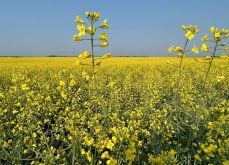Farmers need to think about how carefully they cover their spreads.
Do they randomly lock in prices for crops and inputs when they get the feeling they’re the best they’re going to be, or do they calculate the margins they need in the spreads and try to guarantee profit?
It’s a worthwhile question to ponder at this time in the farming year.
The market is offering lots of opportunity to price crop and input prices for 2011-12.
Read Also

StatCan stands by its model-based crop forecast
Statistics Canada’s model-based production estimates are under scrutiny, but agency says it is confident in the results.
As well, there is an example right now of why spread protection can be more vital than simply pegging the highest sales price for your crop or livestock. Both sides of the cost-revenue complex need to be covered.
A significant worsening of the central spread is pummeling hog producers who sell their animals and buy their feed grain on the cash market.
Hog cash prices have slumped since late September while corn and many prairie feed grain prices have shot higher, creating a brutal situation for producers. Healthy profits have been replaced by break-evens or losses.
This slump in profitability will hit in a few months for those who have steadily hedged their forward production. As a result, it might not be a big deal. However, producers who market hand to mouth will be hit immediately.
Many hog producers learned their hedging lessons during the recent downturn and now regularly hedge some of their production, both on the output and the input side. This is smart and often required by lenders.
During the downturn, the few who hedged a large share of their production came close to breaking even, which was a remarkable feat given the devastating results for most unhedged farmers.
Meanwhile, a growing bullishness has taken hold of many grain growers, with good reason, and that tends to discourage rather than encourage hedging.
Many analysts are now grain bulls and many farmers are likely to pull back from hedging in expectation that prices will keep surging.
Wise producers who hedged their next-year crops in late 2007 sat back and stewed as 2008’s massive rally left them behind in their boring hedged state. Few of them want to feel that again.
However, farmers should look at their costs of production and prices that are now available for 2011 crop and inputs. Are good profits sitting there today for 2011’s production?
The spread that farmers live or die by is the difference between the cost of inputs and the sales price of the output.
Do the math. Can you lock in enough of those prices on both sides to cover most of your expenses? And when you do eventually lock in one component of your cost-revenue complex, are you looking at the others?
There’s an industry of advisers who specialize in this kind of work, and they’re the kind of expert professionals who are probably saving hundreds or thousands of farmers from unnecessary financial crises when spreads suddenly shift.
But you can do these calculations easily at home, on the back of an envelope, without expert help.
Some farmers do this every day. Others read bullish crop market outlooks and forget all about it.
But look at the hog producers’ situation and you’ll see why thinking about spreads is important.
Happy times seemed to have returned in pig country two months ago.
Now, it’s back to a world of anxiety.
———
corn
lean hogs

















